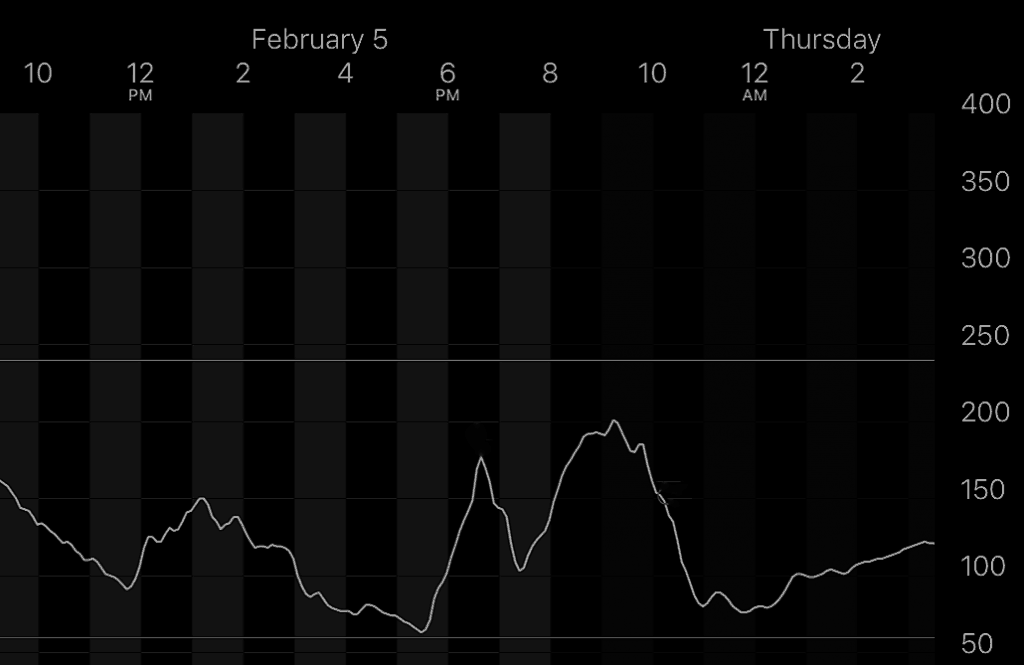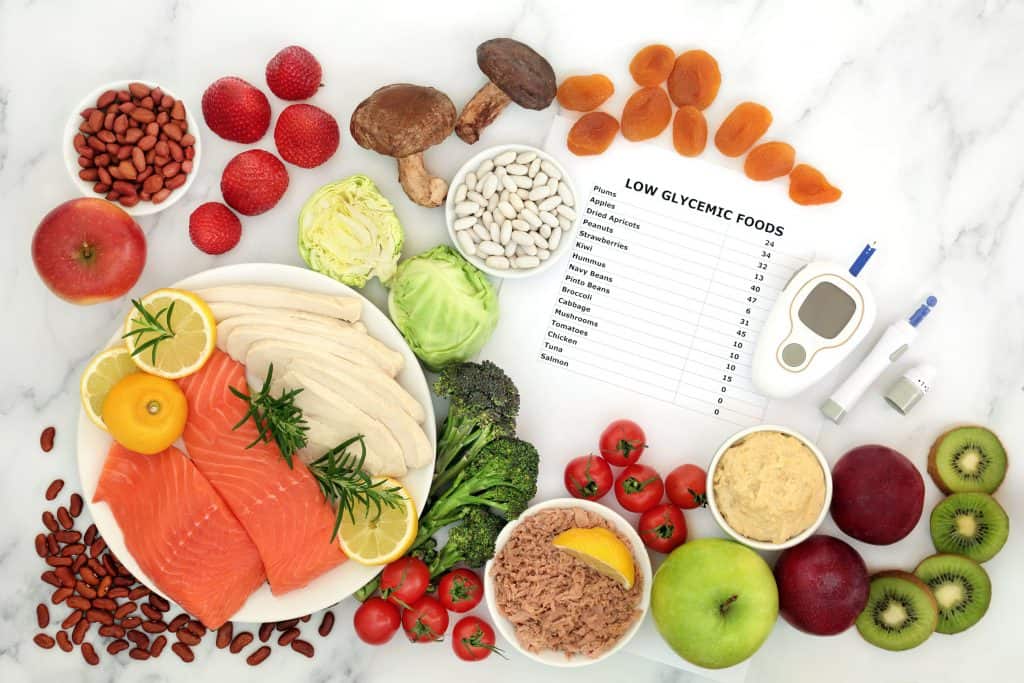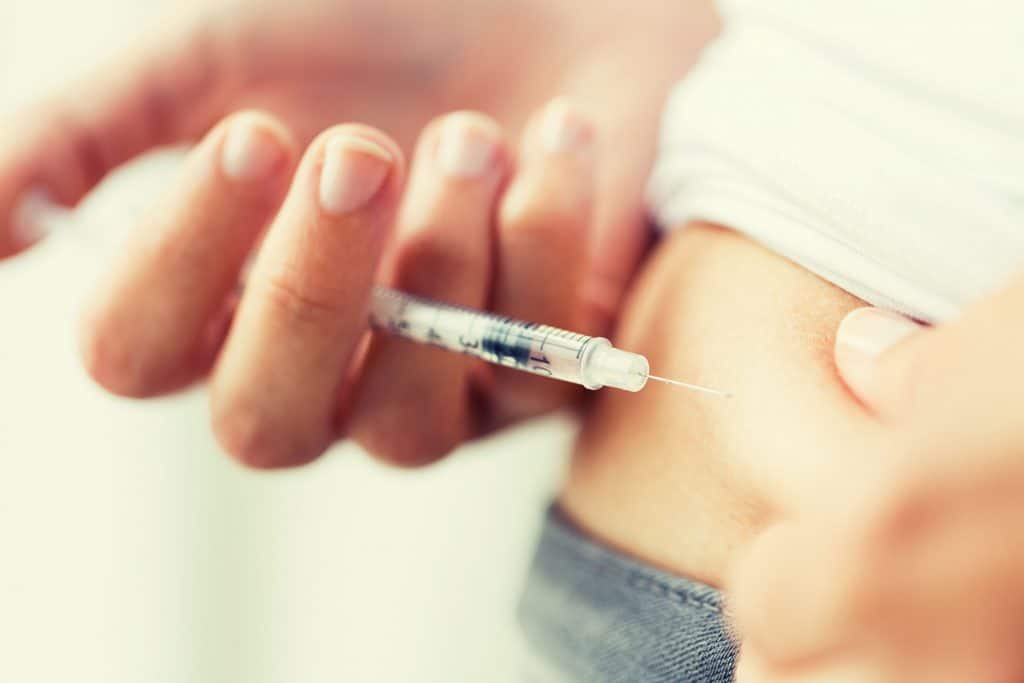How to Improve Blood Glucose Levels After Eating – A Guide
Posted by Prescription Hope - See Editorial Guidelines (Last Updated On: Fri Apr 21 2023)
One crucial aspect of managing diabetes is preventing spikes in blood glucose levels after eating. Learning to improve blood sugar levels after meals will help lower your HbA1c and improve your overall well-being.
Whether you are a type 1 or type 2 diabetic, controlling blood sugar levels can feel nearly impossible some days, especially after meals. This can be due to a few different reasons that affect blood sugar levels.
How to Improve Blood Glucose Levels After Eating? Blood sugar levels tend to peak about an hour after a meal. A person with diabetes can control their blood glucose levels after eating by monitoring their nutritional intake, adding certain foods or spices to their diet, exercising, and adjusting the timing of insulin delivery. Testing your blood sugar levels about 2 hours after eating can help you gain a better understanding of how well you are controlling your blood sugar after eating.
There are a variety of ways to prevent blood sugar spikes after eating, which may vary in effectiveness depending on the individual. Throughout this article, we’ll outline some of the best ways you can prevent these irritating spikes in blood sugar.
Before we get into ways to improve blood glucose levels after eating, we’ll look at why blood sugar spikes.
What Causes Blood Sugar Spikes?
 First and foremost, a person will experience elevated levels of blood sugar, especially after having a meal, due to either insulin resistance or a lack of insulin. Understanding the differences between type 1 and type 2 diabetes is essential for what we are talking about here.
First and foremost, a person will experience elevated levels of blood sugar, especially after having a meal, due to either insulin resistance or a lack of insulin. Understanding the differences between type 1 and type 2 diabetes is essential for what we are talking about here.
When your body is lacking insulin or is resistant to insulin, your body cannot utilize the glucose for energy. So, instead of the glucose being transported from the bloodstream to the proper cells, it remains in the blood. Thus, resulting in elevated blood sugar.
Consistently elevated blood sugar levels can cause serious harm to your long-term health. Therefore, understanding why
A person with diabetes may experience an abnormal increase in blood sugar, despite proper treatment, due to a few different reasons. Here are the most common reasons a person with diabetes will experience blood sugar spikes.
High-Carb Diet
The main contributing factor to elevated blood sugar levels is a diet high in carbohydrates. The body turns carbohydrates into glucose so the body can utilize the glucose for energy.
However, a person with diabetes, as we discussed above, cannot utilize all the glucose in the bloodstream for energy. So, when a person with diabetes consumes a high-carb meal, they may experience a severe spike in blood sugar.
It is important to note here that not all carbohydrates are bad. Complex carbohydrates can be beneficial for those with diabetes.
Complex carbohydrate foods consist of oats, beans, quinoa, and other whole-grain foods. This form of carbs takes longer to digest and does not spike blood sugar levels as much.
On the other hand, simple carbohydrates should be avoided. Simple carbs consist of any foods that contain refined sugars such as candy, syrups, many cereals, and so on. This type of carbohydrate will dramatically spike blood sugar.
Stress
Stress and other emotional responses can be a contributing factor to high blood sugar levels. The thing about stress is that it triggers a natural “fight or flight” response.
We know that one function of the liver is to serve as a storehouse for sugar in the form of glycogen. It stores glycogen and will slowly release glucose into the bloodstream when certain hormones trigger the liver to respond in this way.
The hormones that trigger this response are known as epinephrine and cortisol. When you experience emotional or psychological stress, your body releases these hormones. The liver is then prompted to begin releasing glucose into the bloodstream.
Without proper insulin production, this glucose stays in the bloodstream resulting in elevated blood sugars.
An individual under stress may find it difficult to control blood glucose levels after eating. Their blood sugar may already be high and consuming food spikes it even more. It becomes challenging to determine the proper dose of insulin to stabilize blood sugar levels in this scenario.
Injuries
Physical injuries can impact blood sugar, as well. This may be due to the body having a stress response from the injury or indirect factors. For example, a person that has a physical injury or is recovering from surgery will not be as active.
Exercising regularly can help improve and stabilize blood sugar levels. However, if you are recovering from an injury, the chances are that you are not going to be exercising as strenuously or as often as you usually would. This would result in abnormal blood sugars.
How Long After Eating Will Blood Sugar Peak?
How long it takes for blood sugar levels to peak after eating greatly depends on what you eat. However, typically blood glucose levels will begin rising after about 15 minutes of eating. Your blood sugar will typically peak at about one-hour post-meal.
A person without diabetes may experience a slight spike in blood sugar levels after eating. Normal blood sugar after a meal should not exceed around 150 mg/dL.
A person with diabetes should shoot to keep their blood sugar from spiking as much as possible. A good general goal for those with diabetes should be a blood glucose level of around 180 mg/dL after a meal.
Ways to Improve Blood Glucose Levels After Eating
The goal for a person with diabetes should be to avoid having dramatic blood sugar spikes after eating. A spike in blood sugar is defined as an extreme rise and quick fall in glucose levels.
The large fluctuation in blood glucose levels after eating can cause a person to experience emotional distress and feelings of hunger. The process of learning how to control blood sugar glucose levels can be very frustrating for a person with diabetes. So, here are common ways you can improve blood sugar levels after eating.
1. Go Low-Carb

Studies have shown that consuming a low-carb diet is a great way to prevent blood sugar spikes. This is particularly helpful for those with type 2 diabetes.
A low-carb diet will help you stabilize blood sugar levels throughout the day and will prove to be helpful in losing weight.
Those that have type 1 diabetes will not need as much insulin and will find lower blood sugar levels after eating. So, if you have not cut some carbs out of your meals, then you may want to consider going low carb to find improved glucose levels.
2. Avoid Simple Carbohydrates
Simple carbohydrates are also known as refined carbs, which include foods such as table sugar, white bread, candy, soda, and desserts. This form of carbs is processed in the body quickly and dramatically increases blood sugar levels.
Refined carbohydrates tend to have copious amounts of added sugar. Consuming large amounts of refined carbs can lead to other complications down the road also.
It is best to eat carbohydrates that have a low glycemic index. Generally, complex carbohydrates have a lower glycemic index. Examples of these carbs, as mentioned at the beginning of this article, include whole-grains, oats, quinoa, beans, certain fruits, and many vegetables.
3. Lose Weight
Maintaining a proper weight is a key component to improving blood glucose levels after eating. Individuals that have excess belly fat are at an increased risk of having insulin resistance. Insulin resistance means your body’s cells are not responding to insulin, and glucose is not being utilized for energy properly.
Insulin resistance will then lead to spikes in blood sugar after eating. So, by maintaining a healthy weight, you are decreasing your risk of insulin resistance and allowing your body to utilize glucose more effectively.
Also, if your goal is to lose or to maintain a healthy weight, then you are more than likely sticking to a healthy and stable diet. Thus, resulting in improved blood glucose levels after eating.
4. Break a Sweat
By exercising regularly, you are also decreasing your chances of insulin resistance. Exercise allows your body’s cells to become more responsive to insulin, allowing glucose to be utilized. The muscles being worked during training are also able to take up glucose from the bloodstream.
Exercise allows your body to be more responsive to insulin for up to 24 hours. Therefore, by getting a workout in first thing in the morning, you are still able to see improved glucose levels later in the evening.
5. Add Fiber to Your Diet
Adding fiber to your diet consistently can significantly improve glucose levels after eating. A key component of fiber is that it slows down the absorption of carbohydrates. This gives insulin more time to do its job.
The result of this is more stabilized blood sugar readings. Rather than your blood sugar rising and falling quickly after meals, you will see a more gradual fluctuation, giving you more control.
6. Stay Hydrated

Dehydration can lead to spikes in blood sugar. When your body is dehydrated, the pituitary gland produces a hormone known as vasopressin. Vasopressin is an anti-diuretic hormone that prevents the loss of water. The hormone triggers the kidneys to reabsorb fluid back into the body.
This prevents excess sugar from exiting the body through urination. Therefore, increased blood sugar levels become likely.
Many people do not drink enough water in a day, unfortunately. It is recommended that an individual that is not an athlete or is not often physically active should drink ½ an ounce of water per pound of body weight. Those that are athletes or exercising a lot should drink about 1 ounce of water per pound of body weight.
7. Apple Cider Vinegar
Apple cider vinegar has many benefits when consumed daily in small amounts. Just adding one or two tablespoons of apple cider vinegar to a glass of water in the morning or at night can help improve blood sugar levels and aid in weight loss.
The exact reasoning behind how apple cider vinegar is beneficial is not very clear. However, studies suggest that it can improve the function of insulin. This leads to improved blood glucose levels after eating.
8. Chromium
Chromium is a mineral that naturally occurs in animal and plant tissues, and it has been proven to help increase insulin sensitivity. Chromium supplements are available at many local vitamin stores for those that have low levels of chromium.
Studies suggest that chromium improves the action of insulin, allowing for improved blood sugar levels. Levels of chromium can decrease with age, and those with diabetes or insulin resistance may also have low levels. Taking a chromium supplement may prove to be beneficial.
9. Magnesium
Magnesium is another mineral that can help with improving blood glucose levels after eating. Those with type 2 diabetes typically show lower levels of magnesium, especially in those that have poor glycemic control.
Those with type 2 diabetes may find improved insulin sensitivity with magnesium supplements.
10. Cinnamon
Cinnamon is a spice that has been used for health benefits for many years. There has been controversy surrounding cinnamon and its potential glucose-lowering effect.
Some studies suggest that cinnamon does have a significant impact on blood glucose levels after eating. Whereas, other studies have found no major significance between cinnamon and blood sugar levels.
However, one thing is for certain. Cinnamon is safe for those with diabetes, and some may even find it beneficial for helping control blood sugar levels.
11. Fenugreek
Fenugreek is a plant that can be used for improving glucose levels. The leaves from the plant, as well as the seeds, can be used for cooking and health benefits.
The seeds from Fenugreek can be used as whole seeds or as a powder form after they’ve been ground up. The seeds are high in soluble fiber, which, as mentioned above, has tremendous benefits for those with diabetes.
The seeds slow the absorption of carbohydrates allowing for improved glucose levels after eating. A study showed that 100 grams of Fenugreek seed powder improved glycemic control in patients with type 1 diabetes.
Patients with type 2 diabetes may experience improved blood glucose after eating if they add 15 grams of Fenugreek seed powder to their meal.
12. Cut Out Alcohol
Alcoholic beverages, especially mixed drinks, can have a lot of added sugar. Even a beer that is lower in carbohydrates can cause a spike in blood sugar, followed by a quick drop.
If you do consume alcohol, even at a moderate level, we recommend checking your blood sugar as often as possible to ensure proper glycemic control.
Some research suggests that red wine may improve heart health in those that have type 2 diabetes. A glass of wine a day may also have a glucose-lowering effect in some. We suggest consulting your doctor for farther advice around alcohol and its impact on blood sugar.
13. Berberine
Berberine is a chemical found in plants that can be extracted and used for medicinal purposes. It has been found that Berberine can improve blood glucose levels after a meal.
This chemical may have a similar effect to that of metformin. It was also found that Berberine lowered cholesterol levels in some patients.
14. Adjust the Timing of Insulin Delivery

If you have type 1 diabetes, then administering insulin about 15-20 minutes prior to a meal may improve blood glucose levels after eating. Always check your blood sugar level before administering a bolus of insulin. If your blood sugar is low, then wait about 10-15 minutes after you have started eating.
The timing of when you should give your insulin injection may depend on what type of insulin you are using. For example, Fiasp is a rapid-acting insulin that works faster than other insulins. The manufacturer of Fiasp claims that this insulin can be delivered 15-20 minutes after starting your meal.
Your healthcare provider will be able to provide you with more advice for how and when you should administer insulin.
In Summary
There are many ways that you can take control of your diabetes management. We hope that this article gave you some helpful insight into how you can better control blood glucose levels after eating. Speak with your doctor to find out more about how you can take better control of your medical condition.
Feel free to contact with any questions you may have regarding affording your medication. The team at Prescription Hope knows that it can be difficult to afford life-saving medications such as insulin. We work directly with pharmaceutical manufacturers to provide you with the medication you need at a set, affordable cost. Enroll with us to find out if you are eligible.
How long does it take for blood sugar to rise after eating?
Typically, blood sugar will start to rise within 10-15 minutes after eating. However, it takes about one hour for blood sugar to reach its peak. This will vary depending on what food was consumed.
How long does it take for blood sugar to stabilize after eating?
Those without diabetes should have stabilized blood sugar about 1-2 hours after eating. Those with diabetes can stabilize their blood sugar within that time frame, but they may experience a greater spike in their blood sugar.

